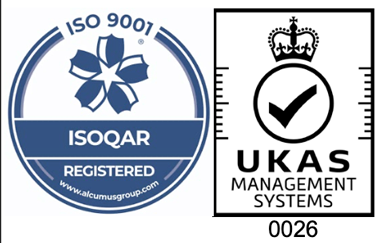An Essential Guide to Rubber Tubing
28th October, 2022
Rubber tubing is a product that is used day to day both in the household and for industrial applications, but what actually is rubber tubing and how is it made? Keep reading to find out everything there is to know about rubber tubing.
What is Rubber Tubing?
Rubber tubing, also referred to as rubber hose or rubber piping, is a synthetic or natural rubber that is primarily used to transport and circulate liquids and gases. As well as being used within households, rubber tubing is widely used for industrial applications, due to its durability and flexibility.
How is Rubber Tubing Made?
Rubber tubing is manufactured using one of two processes: the first manufacturing method involves using a mandrel and the second is using the rubber extrusion method. At Aquaseal Rubber, we use both methods in-house to manufacture our rubber tubing.
The extrusion process is a common manufacturing method for rubber tubing within the industry due to its ease and efficiency. This process involves feeding a soft, unvulcanised rubber compound into a feeder, where it is pushed towards the revolving screw that moves the rubber toward the die. The die can be adjusted depending on the required thickness. As the rubber is forced through the die, it is shaped and then vulcanized, which hardens the moulded rubber to ensure it is fit for purpose.
Interested in finding out more about the rubber extrusion process? See our guide here.
What Types of Rubber Can Rubber Tubing Be Manufactured In?
As rubber tubing has a wide range of applications across various industries, the rubber materials used for the tubing varies depending on the required application. Each type of rubber has strengths and weaknesses, and the material selection for rubber tubing takes a number of factors into account, including temperature of the application, environmental and abrasive factors, compression, and chemical exposure.
Rubber tubing is available in the following:
Fluoroelastomer Rubber Tubing (FKM or Viton™) – this type of rubber tubing is used when the application will be exposed to high temperatures and chemicals.
Butyl Rubber Tubing – Butyl rubber tubing is typically used for air and carbon dioxide transfer, as it is resistant to oxygen degradation.
Neoprene Rubber Tubing – this rubber tubing is used in applications that require a resistance to petroleum products, sunlight, ozone, and heat.
Nitrile Rubber Tubing – Nitrile rubber tubing is resistance to water, petroleum products, and fuels.
Silicone Rubber Tubing – Silicone rubber is used in a wide range of environments due to its flexible properties.
These are just some of the materials that we manufacture rubber tubing in, see our full list of rubber tubing materials here.
Types of Rubber Tubing
Where specialized application is required, a different type of rubber tubing may be required. For example, if the rubber tubing will come into contact with food, then a specially designed, food grade rubber tubing that meet strict FDA guidelines will need to be used. Have a read of our Food Grade Rubber – Everything You Need to Know article to find out more about food grade rubber.
What Industries Use Rubber Tubing and Hoses?
As previously explained, rubber tubing has a number of applications and is a popular choice across a wide range of industries, including the automotive, agriculture, aerospace, food processing, marine and medical industries.
Aquaseal’s Rubber Tubing and Hoses
Does your project require a bespoke rubber tube or hose? Contact our team today to discuss your requirements, and we will design and manufacture a rubber hose that is fit for application.


